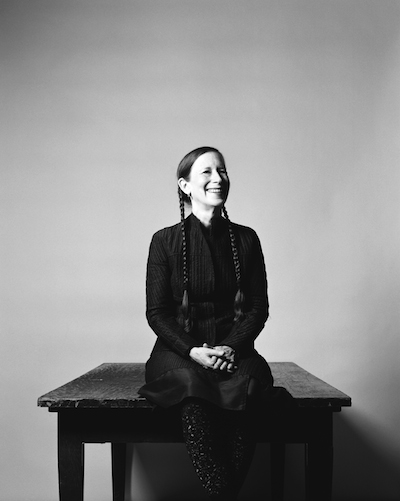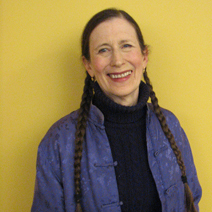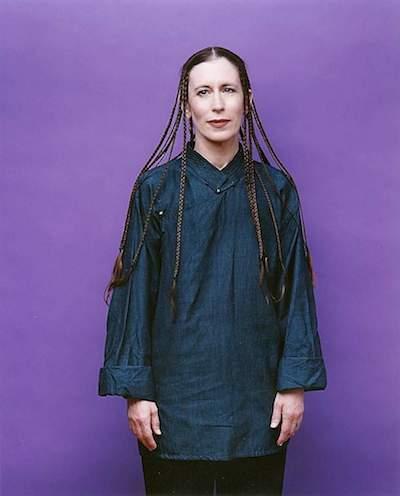The second installment of 2014's Art & Music Series features composer, singer, filmmaker, choreographer, and director Meredith Monk. The polyvalent artist was a member of a circle of the then-obscure but now-revered composers in the 1960s who experimented within a scene that married art, music, and happenings. Alex Ross of the New Yorker writes, “If Monk is seeking a place in the classical firmament, classical music has much to learn from her. She conveys a fundamental humanity and humility that is rare in new-music circles. She is a brainy artist but never a cerebral one; she shapes her ideas to the grain of the voice and the contours of the body.”
Given Monk’s established relationship with visual and performing artists, it is only fitting that she perform in the context of an art space. On the occasion of the recently opened exhibition, Helen Pashgian: Light Invisible, which features the work of the pioneering Light and Space artist, Helen Pashgian, she will offer an aural complement to the ethereal and haunting installation. Monk, herself a pioneer in what is now called “extended vocal technique," will be joined by Katie Geissinger, a member of her Vocal Ensemble. Mitch Glickman, director of music programs at LACMA, spoke to Monk in advance of her upcoming performance, which takes place next Friday, April 11, at the Bing Theater.
 Meredith Monk, photographed by Jesse Frohman
Meredith Monk, photographed by Jesse Frohman
Mitch Glickman: When was the last time you performed in Los Angeles?
Meredith Monk: In January 2013 with On Behalf of Nature, a music-theater work co-commissioned by the Center for the Art of Performance at UCLA. Prior to that, I performed with the Los Angeles Master Chorale in 2010 at Disney Hall.
MG: Can you talk about the repertoire on the program?
 Photo by Peter Ross
Photo by Peter Ross
MM: What I tried to do with this program is to perform songs that are new to Los Angeles. The concert closes with the piece "between song" (from impermanence) that has never been performed in L.A. and Katie and I will be joined by two wonderful L.A. musicians, Richard Valitutto and Brian Walsh, for this final number. Other new pieces to the L.A. audience include “Madwoman’s Vision," selections from Volcano Songs, “Prayer II” from The Politics of Quiet, “Choosing Companions” from ATLAS, and selections from Light Songs. While there is material on the concert that spans over 40 years, I am always uncovering and rediscovering these songs.
MG: On this concert, another wonderful vocalist, Katie Geissinger will be featured. How did you first meet?
MM: I’ve known Katie since 1990 when she auditioned for my production of ATLAS: an opera in 3 parts, presented by Houston Grand Opera. It was a large audition process, and Katie was a stand out. She has been part of Meredith Monk & Vocal Ensemble ever since. There is a wonderful trust and connection that we share and over the years, we have toured as a duo all throughout Europe.
MG: This Art & Music concert celebrates our new exhibition Helen Pashgian: Light Invisible. Pashgian is a trailblazing sculptor whose primary medium is light, not dissimilar to your work as a trailblazing artist whose primary medium is sound. Who were the trailblazers in your life?
 Photo by David Garland
Photo by David Garland
MM: When I was growing up, I vividly remember the great actress and comedienne, Imogene Coca. Now she may not be your typical trailblazer, but her work with physical comedy and characterization left a big impression on me. Jean Cocteau was another trailblazer that had a big influence on me. His integration of different mediums let me know that this kind of work was possible. Maya Deren’s work was also very influential to me for illustrating the displacement of time and space inherent in film language. Musically speaking, the work of Bela Bartok, Erik Satie, and Frederic Mompou had a major impact on me. They were trailblazers in their day and I was fortunate enough to have a teacher that let me play contemporary composers such as Bartok, as opposed to focusing on more traditional classical composers. These were composers that helped shaped my ear.



